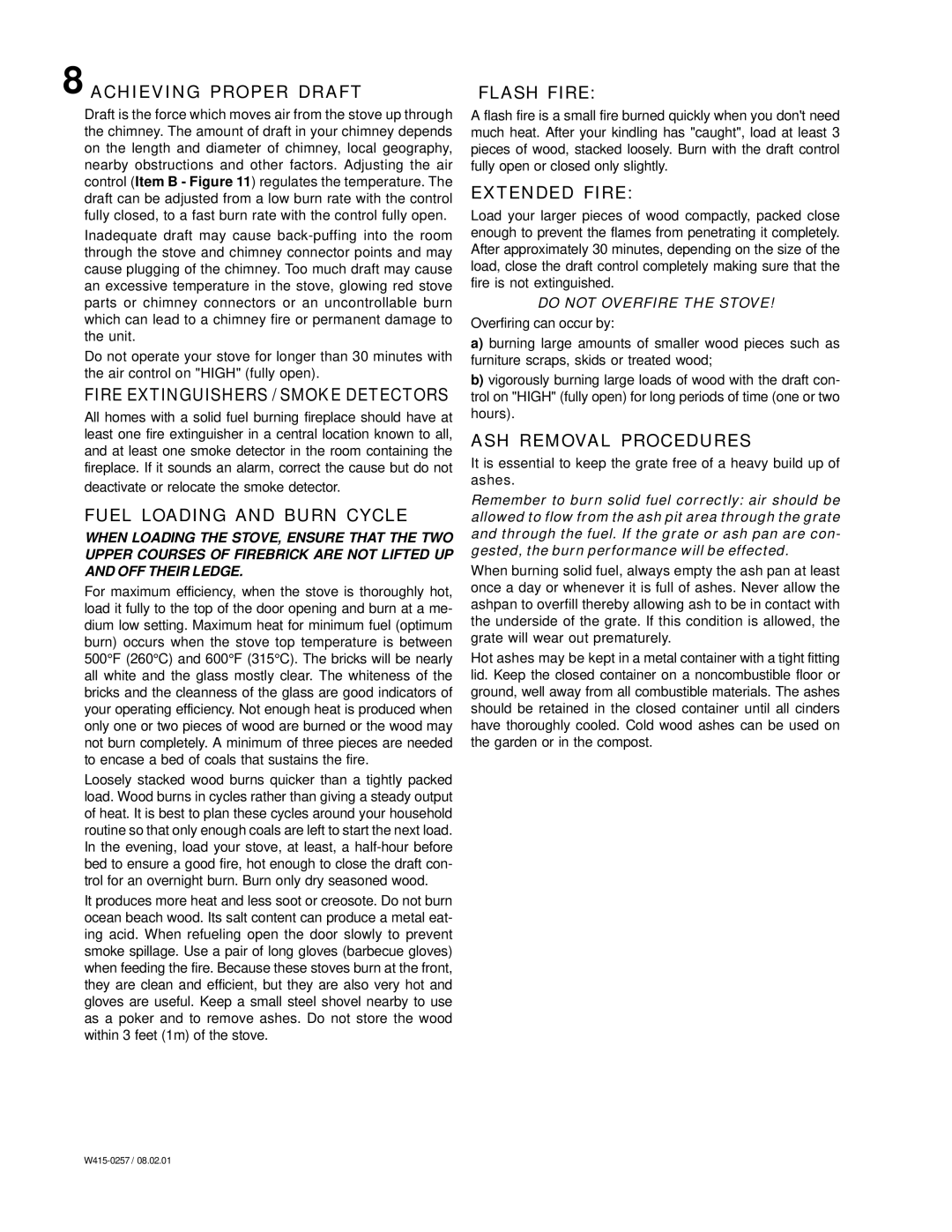Savoy specifications
Napoleon Fireplaces Savoy is a blend of elegance, efficiency, and innovative technology, making it a standout choice for homeowners seeking both warmth and style. This particular model is designed to enhance any space with its sleek lines and modern aesthetic while providing exceptional heating capabilities.One of the main features of the Napoleon Savoy fireplace is its advanced heating technology. The fireplace employs a high-efficiency thermal mass design, which allows it to retain and radiate heat long after the fire has died down. This means that not only does it provide immediate warmth, but it also continues to keep your space comfortable throughout the night. With an impressive heating capacity, the Savoy can effectively warm larger living areas, making it ideal for both smaller homes and expansive spaces.
The Savoy fireplace is equipped with Napoleon's patented Fyre-Box technology, which ensures optimal combustion and heat output. This system improves the efficiency of the fireplace, reducing fuel consumption while maximizing heat production. The result is a more eco-friendly solution that contributes to lower energy bills.
Another hallmark of the Napoleon Fireplaces Savoy is its customizable options. Homeowners can select from a range of finishes and configurations, allowing for a personalized look that fits seamlessly within their home's decor. Whether you prefer a traditional or contemporary style, the Savoy can be tailored to meet your specific preferences.
Safety is also a top priority in the design of the Savoy. The fireplace is built with advanced safety features, including a tempered glass front that remains cool to the touch and an automatic shut-off system for peace of mind. This ensures that users can enjoy the beauty and warmth of the fire without worry.
In terms of maintenance, the Savoy is designed for easy cleaning and upkeep. Its user-friendly ash removal system and the self-cleaning glass feature help maintain a clear view of the mesmerizing flames, so you can enjoy the ambiance without the hassle of regular maintenance.
Overall, the Napoleon Fireplaces Savoy is an exceptional choice for those seeking a modern, efficient, and beautiful fireplace solution. With its advanced technologies, customizable features, and commitment to safety, it stands as a testament to Napoleon's dedication to quality and innovation in the world of home heating solutions.
